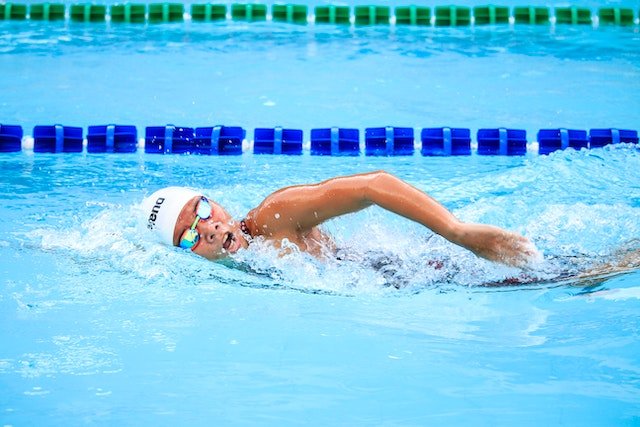A person who is obese will often find it difficult to do physical activities that can help them stay in shape, as well as healthy. They have a higher body mass, which makes movement difficult. They are also more likely to get injured during exercise, as a result of needing to manipulate more mass when they move. In the right environment, however, exercising becomes much easier.
If you’re someone who is obese, or if you’re worried about becoming obese, then swimming can be the perfect exercise for you. When you have a fibreglass pool at home, then you’ll be able to exercise whenever you like, morning or night. Whether you have a fibreglass pool or whether you’re thinking about getting one, know how swimming can help keep obesity at bay through visit blog and reading this article.
Table of Contents
The Benefits Of Swimming
Both overweight people, as well as those who want to prevent themselves from turning obese, can consider swimming. Swimming is often recommended as an exercise for people who want to lose weight, as well as those who are at risk for obesity.
The biggest benefit to swimming in the water is that it’s safer for people who are heavier, compared to high-impact land-based exercises. However, why is this the case? Say you find yourself submerged in water. When this happens, the water that’s around you will act as a cushion that supports your joints. It can improve your blood circulation as well. When you go swimming, you are also able to work out your whole body. As a result, you can burn both fat as well as calories. This can be beneficial for you if your goal is to lose weight.
If you’re overweight, then you can also benefit from cooling off in the pool. This will enable you to boost your endurance, which in turn helps you to work out for longer.
What Kinds Of Exercises Should You Do In The Water?
You might already have heard about swimming styles like freestyle swimming or backstroke. However, you aren’t limited to swimming in a particular style when you go exercising in your fibreglass pool. If you’re overweight, or a beginner, then you shouldn’t rely on these styles of swimming either. This is because it could be too strenuous for your body.
Classic strokes tend to be strenuous for people, especially if they are beginners. If you’re overweight, then you’re also at an increased risk for injury. This is why you should opt for aerobic exercises in the water. These tend to be low-impact, and something beginners can easily do as well. You can even try water walking, or water jogging, as a way to familiarise yourself with exercising in the pool.
Try walking along the perimeter of your pool while you’re in the water. You can jog along the side of the pool as well. Exercises like jumping jacks, as well as normal jumps in the water, can benefit you as well. You can also try side shuffling, where you go from one side of the pool to the other.
Exercising In The Pool When You Are Overweight
If you’re overweight, then your doctor might recommend that you exercise in the deep end of your pool. This is because when you exercise in water that’s deep, your joints will be shielded. This can be beneficial for you, as in case you’re overweight, your joints will be under a lot of stress.
There are other safe movements that you can try as well. These include dog paddling, as well as practising the dolphin kick or the frog kick. You can use a kickboard while you’re practising these kicks in the water. Treading water is also a great exercise that you can try as well. Eventually, you’ll gain enough strength and endurance to do more kinds of exercises.
Useful Tips For Your Exercise Routine
Whether you want to prevent yourself from becoming obese, or you just want to be healthier, swimming or exercising in the water can be great for you. When you’re creating your exercise routine, however, there are some important things that you’ll need to keep in mind. These include:
- Before you start exercising, especially if you’re overweight, talk to a physician first.
- Remember to warm up by doing stretching exercises before you get in the water. You’ll need to warm up for at least five minutes.
- Gradually increase the amount of time you spend exercising. Start out by just working out for ten minutes to half an hour, and increase how long you work out, after that.
- For your water aerobics exercises, you can make use of pool accessories like pool noodles, float belts, and more.
Interval Training
If you want to boost your metabolism, then interval training can be perfect for you. When you do interval training, then you start exercising at a speed that’s slow for the initial two minutes. Then, for the next one minute, you’ll exercise at a faster pace.
Keep doing this for five minutes. Then, cool down by swimming a lap around your fibreglass pool. After your lap, do interval training for another five minutes. Repeat this process for at least thirty minutes.
Swimming Regularly
If you want to lose weight or maintain your body at a certain weight level, then you’ll need to exercise regularly. Instead of exercising just one day every week, you’ll need to exercise at least four or five days every week. You should do at least an hour’s worth of cardiovascular exercises, every day.
Keep exercising regularly, taking rest days in between, to maintain yourself at the weight level you want.
Conclusion
If you want to lose weight, or if you want to keep obesity at bay, then dieting isn’t enough. You’ll need to exercise regularly as well. Swimming is a low-impact exercise that’s perfect for people who want to lose weight. From water walking to swimming laps, there are plenty of exercises that you can do in your fibreglass pool to stay healthy. This guide helps you learn what they are.

